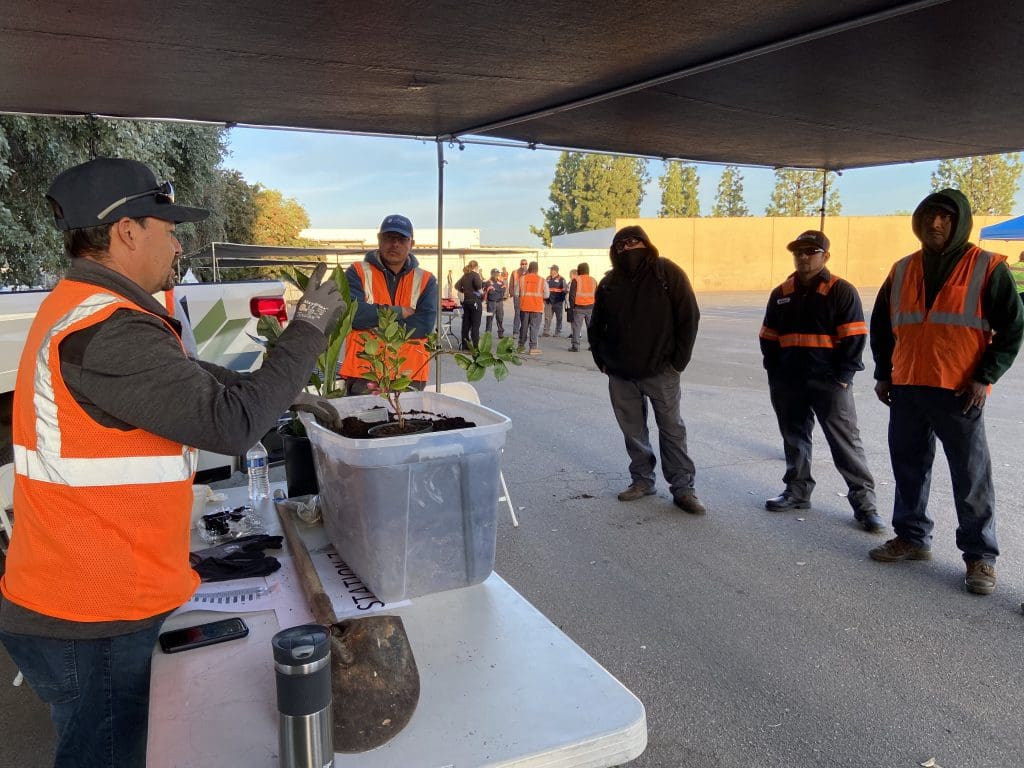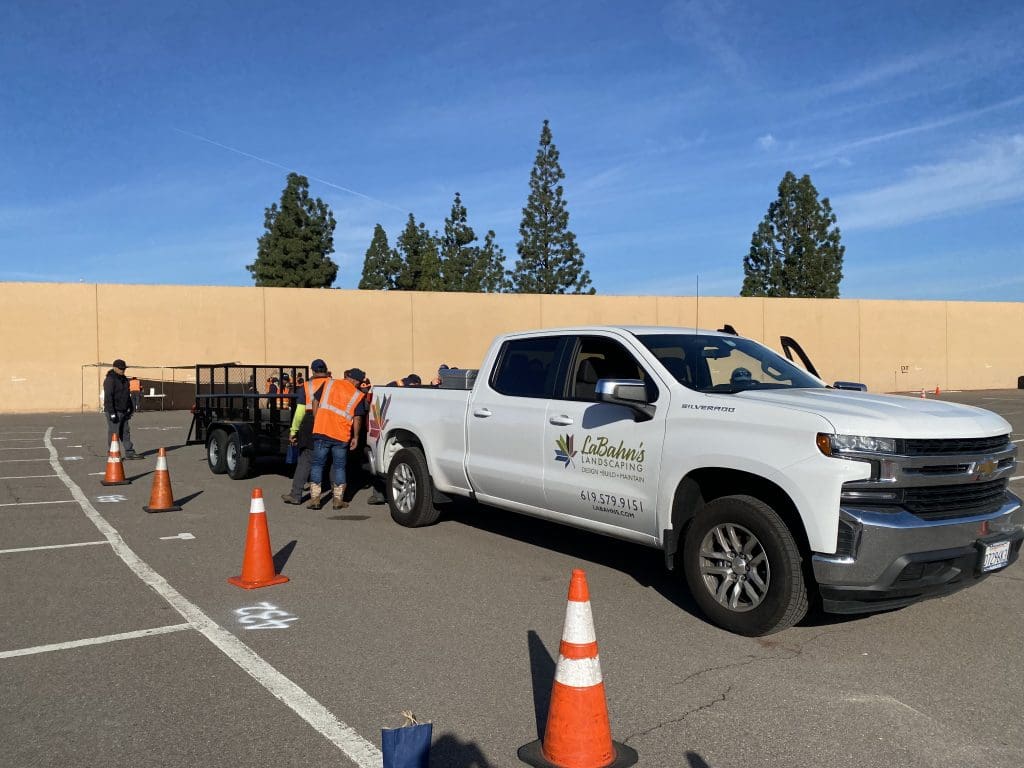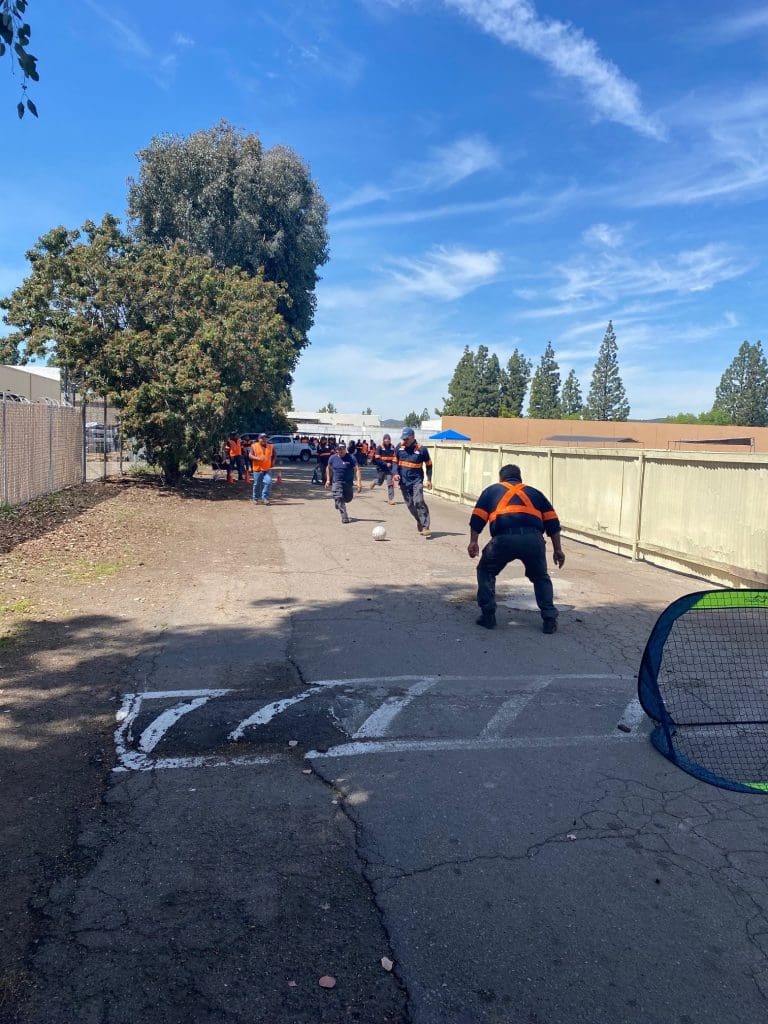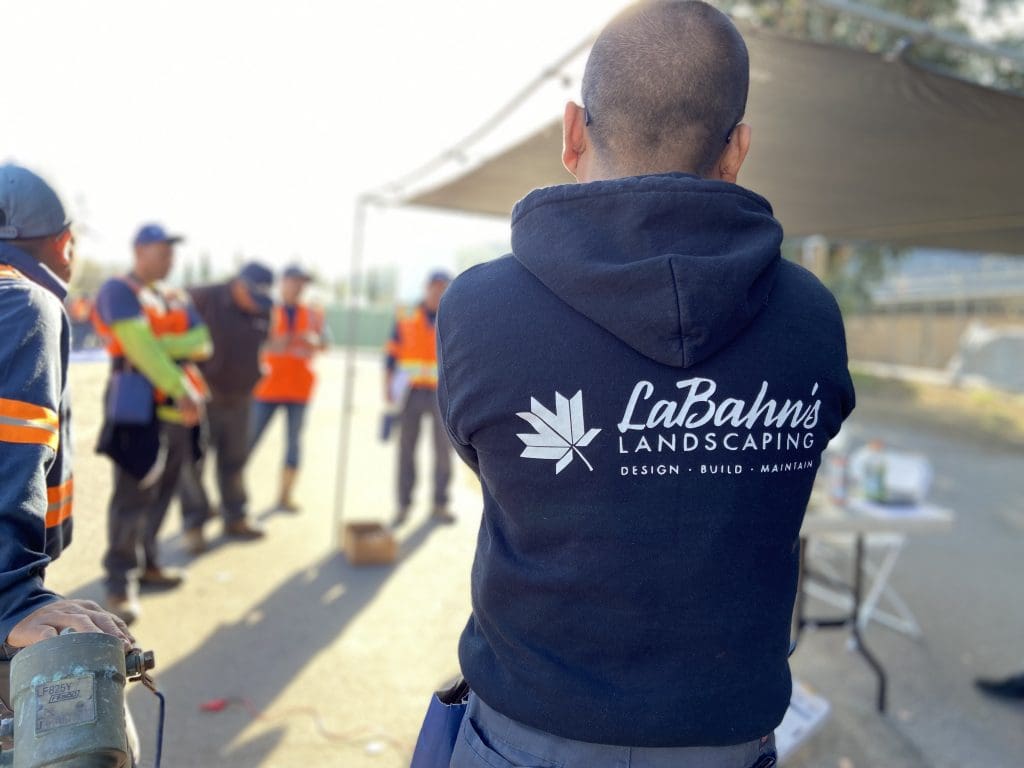
Earlier this month, LaBahn’s Landscaping, based El Cajon, California, hosted their first annual training day as an opportunity to educate their crew members on how to provide the best quality landscape maintenance.
This new annual training day was brought about by the new company president, Chris Gillespie, LIC, who had done it at previous companies.

“It does make sure that our entire team comes together and we get to have everyone touch everything within the industry, instead of just their daily set activities,” says Taylor Heisey, operations manager for LaBahn’s.
The training day featured different station topics including driver safety, irrigation, fertilizer, planting, pesticides, equipment care and human resources. They also had a fun zone where employees could play soccer.
Heisey expects some of the topics will evolve as time goes on, but they will keep the basics every year like pesticides. He says that even when they covered the basics their veteran employees learned something new during the training.
“It was nice to have some of our senior employees be like, ‘Oh, that would make my job so much easier,’” Heisey says.
The event mixed employees from their two branch locations so people who don’t usually work together get to share how they do things.

“It wasn’t just a trainer telling people how to do something,” says Addie Stathatos, director of sales and marketing for LaBahn’s Landscaping. “A lot of it was very conversational, and people in groups sharing their experiences and what they know.”
LaBahn’s also went about getting sponsors for the event like Hunter Industries and Rancho Mesa Insurance Services, Inc. Stathatos says they work closely with their vendors and felt this is something that they’d want to be involved in.
“It’s an expensive undertaking to do this for 150 plus people,” Stathatos says. “So it was super helpful to have them chip in there.”
Leading up to the event, LaBahn’s messaged their clients a month before, two weeks before and then the week of that they would be training their staff all day to better service their properties. Heisey says the staff conducted blitzes on properties to make up for the work they missed but made sure their customers understood this training would benefit them in the end.
Stathatos says hosting the annual training day was well worth the effort as it gets people out of the daily grind and serves as a good morale boost.

“I was pulling some of the crew members aside who were right in the middle of the training and just asking them how it was going and every single one of them were excited,” Stathatos says. “I think it showed that we were investing in them and that we want them to learn more and do well in their jobs. A lot of them were surprised at how much more there was to know about the job.”
LaBahn’s started planning this event three to four months in advance as it required significant communication within the company.
“Definitely plan as far ahead as because there’s just a ton of moving parts,” Stathatos says. “It’s a lot of work, but it pays off.”
Gillespie acknowledges that a lot of cost and effort goes into training a focused team.
“If I told you how much money you could make and how much of an impact it would make on your company to implement a full-time training program, you would be running towards me asking where to sign up,” Gillespie says.
He argues that turnover includes costs such as onboarding a new team member, losing clients as your quality goes down when short-staffed and losing profits as you pay overtime to service properties.
“Investing in your team shows them you care,” Gillespie says. “It builds pride in them when you take time to make them better at what they do. This creates loyalty and reduces turnover for simple monetary reasons.”

He adds that with an untrained workforce you can only get so efficient on the properties you service.
“You will eventually hit a plateau, but if you think you’ve already achieved peak efficiency, you are sadly mistaken,” Gillespie says. “Companies can easily reduce man-hours needed to service properties by up to 25 percent with a well-trained workforce. Your team’s goal should be to have the efficiency of a racing pit crew. Playing the long game with your training program will reap many rewards in the form of increased profits.”
The annual training day isn’t the only element that Gillespie has implemented for employee development. They also provide employees a $2,000 allowance to further their education in the industry. This could be an online or in-person course.
LaBahn’s is also in the process of launching an app/website that has training materials on it that is on every employee’s phone. This allows staff members to train themselves and supervisors can keep track of their progress.
Gillespie says the way they provide incredible relationships for their clients is to eliminate nagging landscape issues.
“When you focus on making your team better, it becomes what the culture is about,” Gillespie says. “You start to see team members lifting each other up personally and professionally. They hold each other accountable, and landscaping quality improves all around. Clients are happy, and it allows property walks with the clients to be about the next project we are suggesting to them or asking about other properties they might need our services for, and less about issues with quality on the property. Our training program is a year-round program focused on improving skills, building pride in our team, and rewarding success.”

